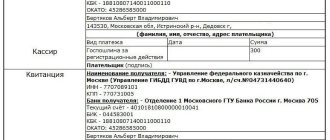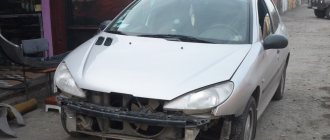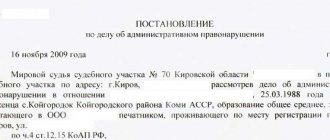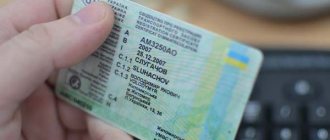Clarifications of the Supreme Court
In order to protect drivers, judicial practice in 2021 focused the attention of traffic police inspectors on the correctness of drawing up protocols. In particular, it was pointed out that mistakes should not be made. And this is fair, since the protocol on the deprivation of a driver’s license is important evidence in a particular case.
Thus, in 2021, the Supreme Court, represented by Judge Sergei Nikiforov, sided with a Moscow driver who was fined 1,500 rubles and deprived of his driver’s license for refusing to undergo a medical examination. The driver did not agree with the punishment and went all the way to the Supreme Court.
And here are the violations identified by the judge of the Supreme Court of the Russian Federation:
- Different times in the protocols (40 minutes difference).
- The traffic police inspector did not explain to the driver his rights and obligations (there was no signature or receipt).
- The witnesses also did not receive any explanations (there were also no signatures).
- Finally, the secretary of the magistrate’s court did not take care to properly notify the driver about the place and time of the consideration of the case (the electronic request in the system was in the “processing” status, and the driver did not receive registered letters).
And what's the result? The court found too many significant errors, including in the preparation of the protocol. As a result, the decisions of the lower courts were overturned, and the administrative prosecution of the driver was terminated due to the lack of proof of the circumstances. Well, of course, they returned the license and the fine paid.
As you can see, the Supreme Court of the Russian Federation competently examined the case and identified serious violations that played in favor of the driver. But, unfortunately, in 2021, magistrates often turn a blind eye to errors in traffic police protocols. As a result, the case is considered immediately, and the arguments of motorists and their defenders are not taken into account. The last one has to go to the very end, involving the Supreme Court of the Russian Federation.
Below we will consider which mistakes can lead to the collapse of a case in court, and which should not be taken seriously.
Is it possible to avoid deprivation of rights if the administrative protocol is drawn up with errors?
Yes, but the violations must be significant. To be even more precise, the error should cast doubt on the very fact of proof of the violation.
Does a mistake in one letter of the surname of the person involved cast doubt? No. Does a mistake in the address cause a violation if a driver is cited for driving into the oncoming lane in violation of traffic rules? Of course, there are already questions about the legality of deprivation of rights.
By the way, errors will be considered by a specific judge in a specific case of deprivation of a driver’s license. The Code of Administrative Offenses of the Russian Federation does not contain any signs of invalidity of the protocol. But we can find the requirements for the content of the document that interests us.
If there is a typo in the last name, first name, patronymic?
This is considered a technical error, and deprivation of rights cannot be avoided.
Example: instead of the surname “Baikov”, the traffic police inspector wrote “Boikov” into the protocol, but the driver did not point out this remark to him. Or didn't notice the typo.
Inaccuracy in the last name, first name or patronymic does not detract from the guilt of the offender. If you ran a red light again, this was recorded by the patrol service registrar, there are witnesses, and a protocol has been drawn up - it is unlikely that deprivation of rights will be avoided solely on the basis of a typo in the last name (first name, patronymic). The judge will either not attach importance to the typo in the full name, or will send the protocol back to the official at the traffic police for correction.
On a note! Theoretically, in the second case, you can count on the expiration of the statute of limitations - in our case, 3 months from the date of drawing up the traffic police protocol (Part 1 of Article 4.5 of the Code of Administrative Offenses of the Russian Federation). If during this time the court does not consider the case and make a decision, then the period for bringing to administrative responsibility will pass. This means production will be stopped. And you will remain with the rights.
Incorrect violation date
Such an error in the protocol on the offense allows the case to fall apart.
For example, you were caught for driving into oncoming traffic on February 16, but the inspector indicated February 15 in the report. It happened that mistakes were made over the years.
There is a serious violation of Part 2 of Art. 28.2 of the Code of Administrative Offenses of the Russian Federation, which states that the protocol must contain “the date of its preparation.” Consequently, if the date in the column is incorrect, then the remaining facts in the protocol do not have a place to be. Perhaps you were abroad or in the hospital that day. This is what you need to build your defense on, pointing out to the court the error with the date - in writing in the form of a petition.
But it just so happens that the judge may consider the wrong date in the protocol to be an insignificant error. The file may also contain other documents (with the correct date) - a medical examination report or a report from a traffic police officer. Then the judge will address them. But he can return the protocol back to the traffic police for correction. And here again it is appropriate to rely on the statute of limitations. That is, delaying the appearance at the traffic police and the court due to notices and calls. 3 months will pass, the statute of limitations will expire, and the proceedings will cease.
Mistake with time
The situation is similar in the case of time.
Let us again turn to the explanations of the Supreme Court from the example at the beginning of the article. Two reports were drawn up against the Moscow driver: one indicated the time of the offense at 2 hours 40 minutes, and the other stated that the same offense was committed at 3 hours 20 minutes. That is, the time difference is 40 minutes. The Supreme Court considered this error to be significant, while lower courts had previously not attached any significance to it.
Conclusion: Draw the court’s attention to discrepancies in the timing of the AP. There is a high probability that the court will find this inaccuracy significant. And the administrative proceedings will be terminated for lack of evidence.
Incorrect address of the crime scene
Again, a lot depends on the judge and the strength of your arguments.
It would seem, what difference does it make, house number 25 or 26? And courts often do not notice addresses entered incorrectly into the protocol. It turns out that the offense was committed in one place, but in fact it is being considered at a completely different address. Perhaps at this very place there is no stop sign, turn, traffic light or other important objects.
What to do in such a situation?
- Attach to the petition the recording from the DVR, any other recording from street cameras, photos and testimony of witnesses.
- Contact the local government authority, prefecture or BTI - you need to get a certificate stating that the address does not exist in principle (if this is indeed the case). You can file a petition with the court to have this information obtained through a judicial request.
It is also important to trace the vehicle's movement pattern on the map. It is better to do this together with the judge in order to identify discrepancies with the data from the protocol directly during the analysis. In the future, this will allow the administrative case to be terminated and the deprivation of rights to be avoided.
No information about witnesses
Witnesses are invited, for example, if you are suspended from driving or are tested for alcohol intoxication. The inspector must find two people, or carry out the procedure on video recording - by virtue of Parts 1-2 of Art. 25.7 Code of Administrative Offenses of the Russian Federation.
At the same time, the traffic police officer must explain to the witnesses the provisions of Art. 25.1 of the Code of Administrative Offenses of the Russian Federation and the provisions of Article 51 of the Constitution of the Russian Federation. If this was not done and these two did not sign the protocols, this indicates procedural violations on the part of the traffic inspectors. Even if witnesses were brought in, but they did not sign, this is also a violation.
Another situation. You have been suspended from driving a vehicle, you are sitting in a patrol car, and the traffic police officer has already filled out a protocol on the suspension. His partner finds two witnesses, they come up and sign the protocol. In fact, this is a violation, since traffic police inspectors must draw up a report in front of witnesses, and not before they are found. And in such cases, you need to apply for the summons of witnesses to the court hearing. When answering the judge’s questions, they will confirm that they signed the already drawn up protocol. And on this basis the case easily falls apart.
Is it legal for a traffic police inspector to single-handedly make changes to protocols?
The first resolution of the Supreme Court of the Russian Federation of April 10, 2021 No. 59-AD17-4.
The citizen was brought to administrative responsibility under Part 1 of Art. 12.8 of the Code of Administrative Offenses of the Russian Federation under the following circumstances.
The traffic police inspector drew up a protocol against the driver regarding an administrative offense under Part 1 of Art. 12.8 Code of Administrative Offenses of the Russian Federation. This protocol was twice returned by the magistrate to the traffic police inspector to eliminate the shortcomings, and the second time, it was sent to the inspector because the first time he did not eliminate the shortcomings indicated by the magistrate.
The traffic police inspector did not bother to notify the person in respect of whom the administrative violation protocol was drawn up and made the following changes to it single-handedly: “the technical device (its name) is indicated that was used during the examination of the person brought to administrative responsibility, his testimony is given, it is indicated that the actions... do not contain a criminal offense.”
The fact that changes to the protocol on an administrative offense were made by a traffic police inspector in violation of the provisions of the Code of Administrative Offenses of the Russian Federation was brought to the attention of the courts by both the driver himself and his defense attorney, but only the Supreme Court of the Russian Federation listened to these arguments.
Canceling the judicial acts in this case and terminating the proceedings in the case, the Supreme Court of the Russian Federation indicated:
“The interpretation of the provisions of parts 4, 4.1, 6 of Article 28.2 of the Code of the Russian Federation on Administrative Offenses in their systematic relationship allows us to come to the conclusion that changes to the information previously entered into the protocol on an administrative offense are made in the presence of the person in respect of whom the protocol was drawn up about an administrative offense. In its absence, such changes can be made to the said procedural act only if there is information about proper notification of such a person.
A different interpretation of the above norms of the Code of the Russian Federation on Administrative Offenses would mean a violation of the rights of the person against whom proceedings are being conducted for an administrative offense.”
The Supreme Court of the Russian Federation also came to the conclusion that due to the introduction by the traffic police inspector of changes to the protocol on an administrative offense in the absence of the person involved, he was deprived of the guarantees provided to him for the protection of his rights, since he could not qualifiedly object and give explanations on the merits of the changes made to it.
Second Resolution of the Supreme Court of the Russian Federation dated May 30, 2021 No. 5-AD16-25.
The citizen was brought to administrative responsibility for an administrative offense under Part 1 of Art. 12.26 Code of Administrative Offenses of the Russian Federation.
In this case, in addition to the protocol on the administrative offense, the traffic police inspector also made changes to the protocols on suspension from driving a vehicle and on referral for a medical examination for intoxication. As in the case discussed above, the traffic police inspector made changes to the procedural acts single-handedly, without notifying the person involved.
The position of the RF Supreme Court in this resolution is similar to the above position, but another circumstance attracted attention.
The resolution states:
“The Supreme Court of the Russian Federation, in rulings on cases of administrative offenses, has repeatedly drawn attention to the inadmissibility of officials making unauthorized unilateral changes to protocols drawn up during the proceedings.”
This conclusion of the highest court suggests that the Supreme Court of the Russian Federation quite often has to consider complaints against decisions in cases of administrative offenses, which justify their illegality with reference to the fact that changes to the procedural acts were made in the absence of the person involved in responsibility and information about its proper notification.
I believe that the position of the RF Armed Forces regarding the inadmissibility of unauthorized unilateral amendments to protocols by officials is well-formed and well-established. It is a pity that, as the practice of the RF Supreme Court again shows, not all lower courts take it into account when administering justice.
Important note!
- This article provides basic information, but each case is different.
- In 92% of all situations there are important nuances that can affect the outcome of the entire case.
- An experienced lawyer will study all the materials of the case and indicate in which direction to move.
Therefore, our website employs on-duty legal consultants who delve into each case and are aimed at solving it.
Ask a Question
or consult toll-free (Moscow), (St. Petersburg), 8 (all of Russia).
If the traffic police inspector did not explain my rights and responsibilities?
An obvious mistake by a traffic police officer who plays in your favor.
Back in 2005, the Supreme Court indicated that the collected evidence should be assessed from the point of view of compliance with the requirements of the law when received (clause 18 of the Resolution of the Plenum of the Supreme Court No. 5 of March 24, 2005). And now, in 2021, this is extremely relevant!
The logic is as follows: since the traffic police inspector did not explain your rights and responsibilities, it means you did not have the opportunity to use them properly. For example, immediately call the defender (lawyer), file a petition, challenge, or familiarize yourself with all the materials of the case. And it doesn’t matter whether you knew about it right away or not.
Since the traffic inspector violated the regulations, it means that the evidence he collected was obtained illegally. And this is a reason to terminate administrative proceedings. Therefore, film, attract witnesses and submit complaints to the higher authorities of the traffic police within 10 days from the date of drawing up the protocol - this is in your own interests!
My rights and responsibilities are not explained
This is a serious argument to ruin the case in court. The Supreme Court has clarified that the evidence presented must be obtained legally, and in 2021 this is very relevant. If your rights are not explained to you, then you could not use them correctly. That is, they did not know that you have the right to seek the services of a defense lawyer, file petitions, and get acquainted with the case materials.
If this violation occurs, then the evidence was obtained in violation of the law. Therefore, film, file complaints, attract witnesses. All this will be to your benefit.
What if I don't have my signature?
Depends on where the signature is missing.
There is no point in refusing to sign the administrative protocol. This will not achieve anything. And, most likely, you will only make things worse for yourself - since the inspector will put a corresponding entry in the box, and then give you a copy of the protocol right on the spot, or send it by mail within 3 days (Part 4.1 of Article 28.2 of the Code of Administrative Offenses of the Russian Federation).
It is much better to indicate in the protocol that your rights and obligations were not explained to you - and this will be a serious argument in a dispute with a traffic police inspector at a court hearing.
Is the protocol valid with changes and corrections?
Yes, but changes are made according to the regulations:
- Firstly, this is done by the traffic police officer, who initially drew up the protocol with the sanction of deprivation of a driver’s license.
- Secondly, changes can only be made in your presence. Usually, for this purpose, employees send a notice to the driver so that he comes to the traffic police and is present when errors in the protocol are corrected. They can also call and be summoned to the department.
- Thirdly, after entering new data, the inspector writes the phrase “believe the corrected”, puts a stamp, and next to it - his signature. But you, if you have no objections, have the right to sign right away. Or make a note that will be attached to the accident report.
- If the protocol was drawn up in your presence, but then it was changed in your absence, and you were not informed about it, this is also a procedural violation. The court must recognize such a protocol as invalid evidence. As, for example, the Supreme Court did this in Resolution No. 18-AD19-64 of November 8, 2019.
And one moment. If you suddenly notice that the protocol contains information that you have not seen before, file a petition to recognize the protocol as inadmissible evidence in the case. And there are two options for where to submit the petition: to a higher official in the traffic police, or to the magistrate’s court.
In general, always make written documents. They are much more effective than your oral explanations to the judge (which he often ignores). If you file such a petition, it will definitely be added to the case, which means a compelling argument will appear in your defense box. And then there is a real chance to avoid deprivation of a driver’s license and other penalties.
Incorrect preparation of a protocol on an administrative violation
The Supreme Court applied the presumption of innocence and overturned the punishment for a driver who was deprived of his license for a year for repeatedly driving into oncoming traffic. The fact is that the protocol on the offense was drawn up incorrectly, and the traffic police inspector decided to correct it. He “interrogated” himself as a witness and told what was missing from the protocol. In addition, it was not clear from the case materials which camera—automatic or not—was used to record the driver’s violation. The lower authorities were not confused by these circumstances. The Supreme Court terminated the proceedings and explained why. In February 2021, traffic police officer for the Penza region A. Abolyanin drew up a report that driver Sergei Vladimirov* drove into the oncoming lane on the Nizhny Novgorod - Saratov highway. This was confirmed by a video recording, which, along with other materials, was sent to the magistrate of the Tagansky District Court of Moscow. But when the protocol went to court, it turned out that the inspector forgot to indicate which particular point of the traffic rules was violated. But driving into oncoming traffic is prohibited by several different rules. Which of them specifically Vladimirov violated was unclear from the protocol. “It cannot be sent to correct shortcomings if the court has already prepared a case and is considering it,” notes Kirill Formanchuk from the Committee for the Protection of the Rights of Car Owners . The resourceful Abolyanin “corrected” the situation with written explanations, which he took from himself.
Because witnesses must be warned of the penalties of perjury and informed of their rights, the inspector "made that clear to himself." The written explanations state this precisely, although it is unknown what this might look like in practice.
The Tagansky district magistrate considered that there was enough evidence to deprive Vladimirov of his rights for a year based on a combination of violations - after all, this was his second trip to oncoming traffic (clause 5 of Article 12.15 of the Administrative Code). The driver went to appeal the decision, but found understanding only in the Supreme Court. Judge Sergei Nikiforov found obvious shortcomings in the case. The protocol does not indicate which specific clause of the traffic rules was violated, and Abolyanin’s testimony cannot be considered admissible evidence in the case, as set out in definition 5-AD17-17. And the inspector was not called to court. In addition, not everything is in order with the video recording. It is not known with what device it was made, but this is very important for the case, the Supreme Court judge noted. After all, paragraph 5 of Article 12.15 of the Code of Administrative Offenses provides for two sanctions. This is not only a deprivation of rights for a year, but also a five thousand fine - if driving into oncoming traffic is recorded by automatic means of video recording. With such arguments, the Supreme Court judge overturned all decisions and terminated the proceedings.
Witnesses interested in the service
The quality of materials that come from the traffic police to the court often leaves much to be desired, states Formanchuk. But correcting the shortcomings of the protocol with the help of explanations from the same “author” is a clear procedural violation, says Marina Kostina, lawyer of the Yakovlev and Partners legal group
“It seems to me that the Supreme Court says that the Code of Administrative Offenses does not imply the possibility of a coincidence in one person of the witness and the inspector who initiated the proceedings in the case” - Marina Kostina, YG Yakovlev and Partners
Meanwhile, in practice this often happens: inspectors take explanations from themselves, says Vladimir Starinsky, managing partner of Starinsky, Korchago and Partners . According to him, the courts accept such explanations and do not check other circumstances of the case - they act on the unspoken principle of trust in the testimony of traffic police officers. But their official interest in the outcome of the case cannot be discounted, warns Igor Ozersky, senior partner of the legal team, member of the Association of Lawyers of Russia (ARA) . According to him, the Supreme Court's ruling calls on courts to carefully evaluate whether the evidence provided by officials is admissible.
The issue of video recordings is commented on by the leading legal adviser of KSK Group, Yulia Nevzorova . To confirm which device the violation was removed, they provide its certificate, says Nevzorova. But if it is not there and it is impossible to establish exactly from which device the filming was taken (and the judge does not have special knowledge), then the presumption of innocence begins to apply. This means that irremovable doubts about a person’s guilt are interpreted in his favor, Nevzorova sums up.











